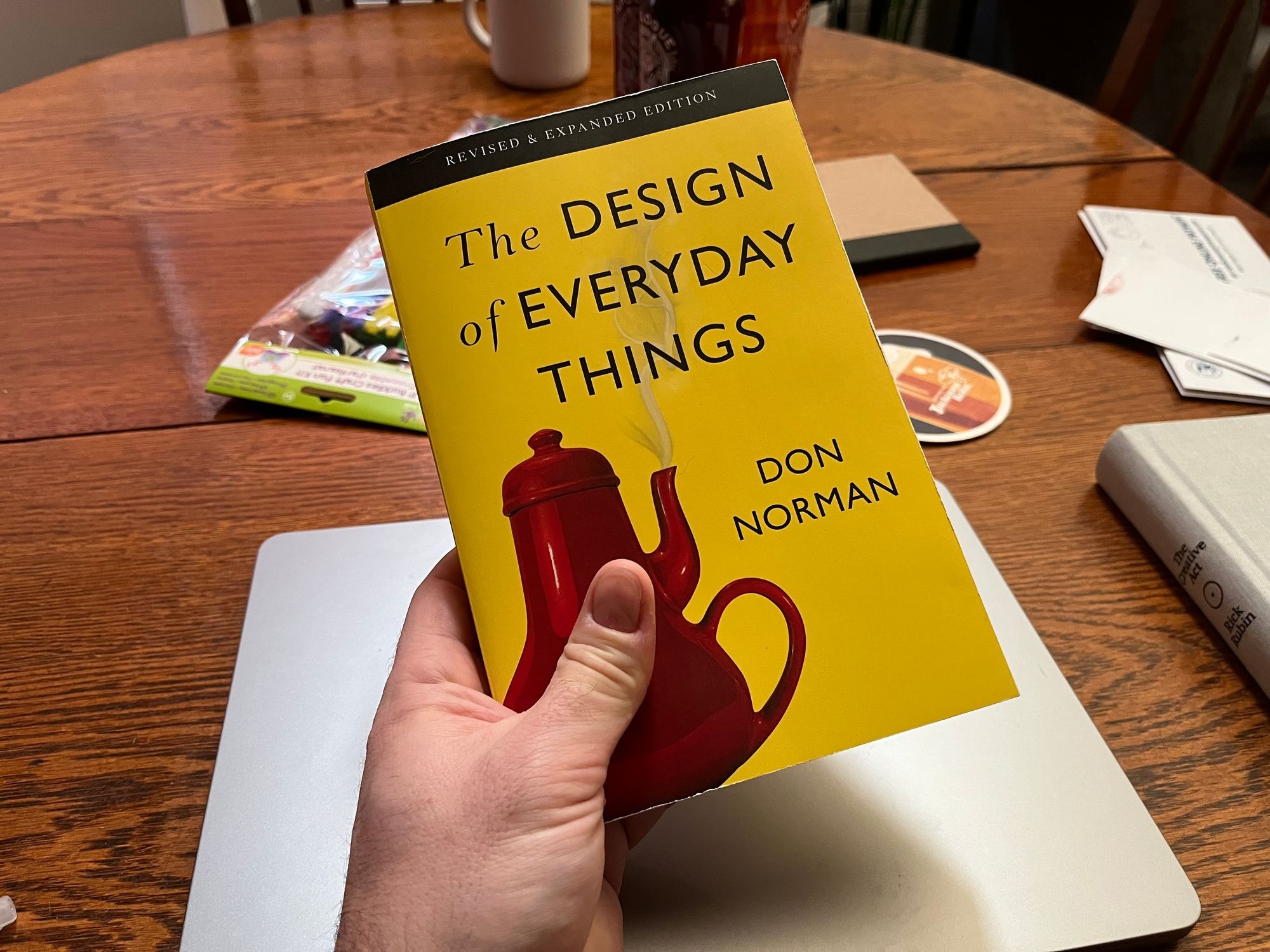After Reading: The Design of Everyday Things

I finished reading Don Norman’s The Design of Everyday Things last night. Looking at my highlights, it was a useful book.
I think this book explained much of what I enjoy about working with my favorite designers, and much of what I have seen them reference and emulate over the years. Most of what I found useful was related to interaction and interface categorization (affordances, control mapping, stages of action, and more) - better terminology to guide my thinking around problems of product design.
The last two chapters, one on ‘Design Thinking’ (a process of applying Norman’s design principles to product development) and one on ‘Design in the World of Business’ were not very useful to me. The former was very familiar to me as I’ve practiced it numerous times in startups over the years, and I think has been better expanded and tooled into books like Sprint and modern product management techniques. The latter was mostly just speculation by Norman about what future products would exist.
Reading this definitely made me want to set aside some time to deeply consider how I might apply some of these frameworks to the little controls, tooling, and structure I’ve been building around our house over the last year. I’ve wanted to make it more of a practice to change my environment for the better (building shelves right where I want them and exactly as big as I want them, building padding to door frames that make too much noise, printing out my own labels for gauges and controls, etc.), but Norman’s frameworks for things like ideal control placement and leveraging physical constraints have inspired me to reconsider the interfaces around me and change them for the better.
Highlights
When we interact with a product, we need to figure out how to work it. This means discovering what it does, how it works, and what operations are possible: discoverability. Discoverability results from appropriate application of five fundamental psychological concepts covered in the next few chapters: affordances, signifiers, constraints, mappings, and feedback.
The presence of an affordance is jointly determined by the qualities of the object and the abilities of the agent that is interacting. This relational definition of affordance gives considerable difficulty to many people. We are used to thinking that properties are associated with objects. But affordance is not a property. An affordance is a relationship. Whether an affordance exists depends upon the properties of both the object and the agent.
(And people change constantly, thus affordances are changing constantly)
Physical constraints are made more effective and useful if they are easy to see and interpret, for then the set of actions is restricted before anything has been done. Otherwise, a physical constraint prevents a wrong action from succeeding only after it has been tried.
(And physical constraints should be leveraged for safety as well as ease of use)
🍃
More highlights and notes in the garden.
Reference
| ← Previous | Next → |
| Fitbod - Quadriceps, Chest, Triceps, Lower Back 🏋️ | Fitbod - Back, Hamstrings, Shoulders, Abs 🏋️ |